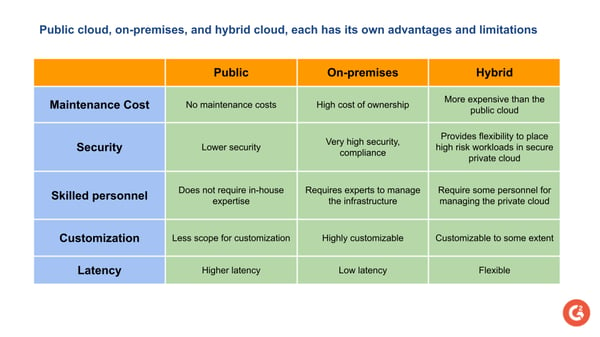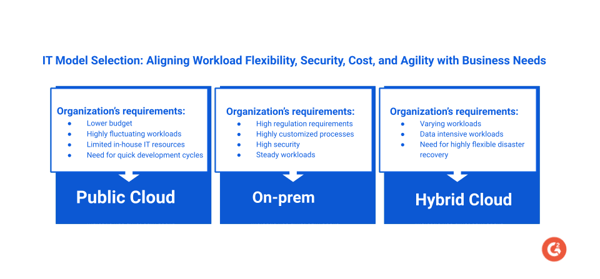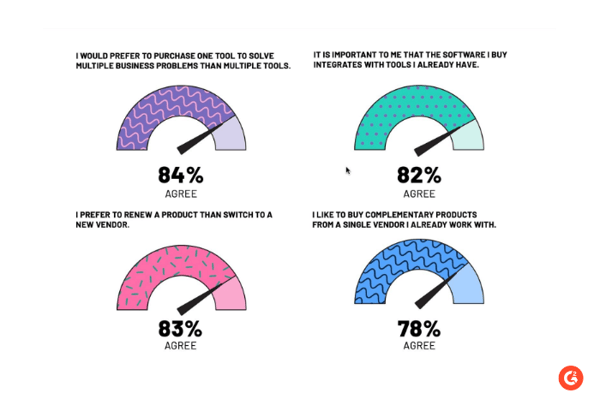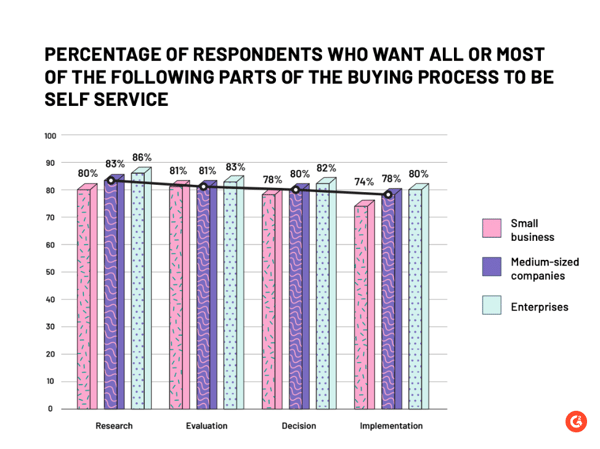Cloud has transformed how companies work by providing easy access to powerful computing resources and data. However, it has decreased control over cost, security, and visibility, leading companies to question their cloud-only strategies.
In our previous article, we touched upon the challenges with the cloud, how companies are gravitating towards on-premises solutions, and how hybrid cloud has emerged as the halfway point to get the best of both on-premises and cloud options.
Let’s dive in deeper.
As more businesses go digital, hybrid cloud provides a competitive advantage. With single cloud deployment being unreliable, hybrid clouds are being widely implemented.
What is a hybrid cloud?
A hybrid cloud is a combination of two or three computing, storage, and services environments made up of:
- At least one private cloud and at least one public cloud
- Two or more public or private cloud or both
- On-premises data centers
Hybrid cloud solutions include both cloud environments and on-premises infrastructure. Companies can benefit from continued use of on-premises infrastructure and are taking advantage of flexible storage options provided by public cloud providers.
The hybrid cloud edge: Unleashing the best of both worlds
There are several perks to embracing a hybrid cloud strategy.
Cost management: Hybrid cloud effectively manages costs by providing flexibility to optimally allocate workloads between cloud and on-premises. It also allows companies to manage their storage costs by distributing storage between on-premise servers for critical data and the public cloud for dynamic data.
Data control: Hybrid cloud allows organizations more control over their data. Organizations can scale their IT infrastructure as and when the demand increases. Unlike in public clouds, where the control lies with third-party service providers, organizations with the hybrid cloud can customize the private side of the cloud storage as it suits their needs.
Security: Organizations with hybrid clouds get the best of both worlds. They have the security of a private cloud and the usability options of a public cloud. Most hybrid cloud providers offer encryption features to transfer data safely.
Public clouds are naturally configured with automated security systems. Whereas private clouds provide customized security to protect an organization's sensitive data.
How to balance the cost, security, and agility of hybrid clouds
It is worth noting that a hybrid cloud is not the answer to all IT strategy problems. Hybrid clouds can complicate the tech landscape, requiring highly precise integration of on-premises and cloud environments for seamless execution.
Companies must do their due diligence to define the value they want from their IT investments and then identify the strategy to lead them to that goal.

Public, on-premises, or hybrid cloud: Choosing the right IT strategy
Some pointers that companies must consider while choosing between public cloud, on-premises, and hybrid cloud are:
- Workloads and capacity requirements: Companies that have dynamic workloads would benefit from cloud setups where they can scale up or down the capacity based on capacity demands.
Resource scaling is difficult in the on-premises environment since companies must invest in additional hardware costs. On-premises is, therefore, most suitable for companies with consistent capacity demands.
- Cost: Public cloud has a pay-as-you-go model. Therefore, the cost to maintain the cloud environment is the operating cost spread across a period of time. The overall cost of ownership is also less, making it a more attractive option for smaller and mid-size companies.
On the contrary, on-premises deployments require a lot of upfront investment for setting up the landscape. A hybrid cloud setup allows dynamic workloads on a public cloud and steady workloads on on-premises.
- Customization: A public cloud has standard processes with limited customization options. On-premises solutions are highly customizable as they are set up for a particular organization, though they can be expensive. A hybrid cloud can also be an option where standard operations are kept on the cloud, and bespoke solutions are on-premises.
- Compliance: Public cloud has standard compliance settings. But some highly regulated industries like financial services and healthcare might have more substantial compliance requirements. In such cases, on-premises deployments could be a better choice.
Another way could be a hybrid cloud setup where processes requiring high compliance are placed in the on-premises system.
- IT resources: Since the cloud service provider owns public cloud management and maintenance, limited staff is required to manage the cloud environment. On-premises setups require more staff to set up and manage the entire landscape.

Building a solid foundation for a successful hybrid cloud strategy
If a company chooses to go for a hybrid cloud model, it should identify its security posture, data and workload segregation, availability requirements, and budget. Accordingly, they can design their hybrid cloud setup.
Here is how organizations can plan a successful hybrid cloud strategy:
Understanding business requirements: With hybrid cloud set-ups, companies can decide where they want to place their workloads—on-premises or cloud. But to do this efficiently, businesses must identify their requirements and choose the right environment.
For example, some processes might be business critical, some might be resource intensive, and others have strict compliance requirements. Digging deeper into workload requirements allows organizations to identify what combination of on-premises, private, and public cloud services would work best.
Three main factors to consider are:
- The workload that must be supported by a hybrid cloud
- Traffic volumes
- Data security and compliance
Based on this, companies should distribute their workloads.
Selection of cloud providers: Studying and comparing vendors that fulfill requirements such as reliability, security, and support can help select suitable vendors.
For example, some vendors might provide better support for a hybrid cloud, while others work better in the public cloud setup. Some might provide better performance tracking, while others offer better cost management options. Weighing the features and tradeoffs can help select the right vendor set.
Prioritize security: Any hybrid cloud infrastructure implementation is incomplete without security. It is necessary to ensure that security is provided across all the cloud environments and that data is always encrypted—in transit or at rest.
There is bound to be a lot of data transfer between public and on-premises environments. Companies need to establish that security, encryption, and protocols are in place to ensure secure data transfer.
Listed below are tools that can help enhance the security of a hybrid cloud.

Consider governance policies: It is essential to create a strong policy network so that the data stored is easily accessible to authorized users and kept away from unauthorized individuals.
Interoperability: According to G2’s 2023 G2 Software Buyer Behavior Report, buyers consider ease of integration as more important than the tidal cost of ownership, security, and cost of the software.
The chart below shows that 82% of buyers prefer software that would integrate with the tools that the buyers already own.

Companies might have a public cloud set up with some vendor and an on-premises setup with another vendor. Businesses, therefore, must ensure that both deployment methods are interoperable and compatible to ensure the free flow of information between them. Compatible technologies must be used, and the right communication channels should be set up.
Connectivity and scalability: Network connectivity between public and on-premises must be robust to ensure seamless transfer of information across environments. The environments should be scalable to handle fluctuating loads.
The satisfaction scores on G2’s Hybrid Cloud Storage Solutions category reveal low latency, ease of use, and high availability are the most important features that buyers look for in hybrid storage software.
Cost optimization: The cost risk with the public cloud also exists here. Companies need to have strong cost management strategies and cost management tools to ensure they have very high visibility into contracts and spending across cloud and on-premises environments. Analyzing usage patterns, pricing models, etc., can help optimize costs in the long run.
Companies prefer self-service IT these days so that the part of the process where the data has to be first migrated to third-party service providers can be eliminated.
One of the hybrid cloud strategies that G2 has observed is the growth of the self-service IT space.
G2’s Buyer Behaviour report shows various company segments on the X-axis that believe in self-service implementation expressed in percentage on the Y axis. According to G2’s Buyer Behavior Survey report, almost 74% of small businesses, 78% of medium-sized companies, and 80% of enterprises choose self-service implementation options.

Migrating data from on-premises to hybrid cloud involves transferring data to these service providers until the hybrid cloud infrastructure is implemented. This can cause an upsurge in costs and time consumption. Companies prefer to migrate the workload on-premises until the hybrid cloud infrastructure is implemented to save these additional costs and time.
Navigating the cloud landscape: Harnessing the power of hybrid cloud deployment
Challenges with the cloud revolution have motivated companies to explore other avenues. While attractive from some angles, on-premises solutions are only feasible for some businesses. A complete cloud solution, on the other hand, comes with security, compliance, and visibility issues.
Hybrid cloud deployment, therefore, provides a balance between the advantages of public cloud and on-premises. But it is not a silver bullet that solves all problems.
Companies must first understand the value they seek from their IT infrastructure and then see how to set up their IT environment to achieve these goals.
Companies must ensure compatibility between different cloud vendors, establish robust security measures, manage resources effectively, optimize costs, and maintain strong connectivity and scalability to set up the hybrid cloud for success.
Be informed on the important hybrid cloud storage statistics before you adopt one.
 This article is co-written by Rachana Hasyagar, Research Principal, Cloud Computing.
This article is co-written by Rachana Hasyagar, Research Principal, Cloud Computing.
Edited by Shanti S Nair


 by Rachana Hasyagar
by Rachana Hasyagar
 by Rachana Hasyagar
by Rachana Hasyagar
 by Preethica Furtado
by Preethica Furtado